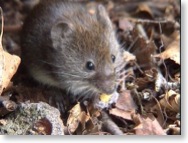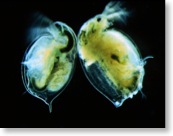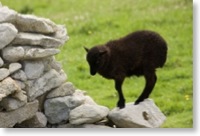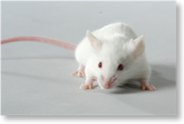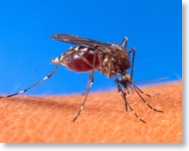Wild Mice and Voles. This research focuses on the dynamics of parasite communities in wild populations of Apodemus sylvaticus (wood mice) and Cleithrionomys glareolus (bank voles) in the UK. These rodents inhabit woodlands and forests, occur in large numbers and are dominant in their respective habitats.They are home to a vast diversity of parasites and pathogens, including coccidial protozoans, nematodes, cestodes, viruses, blood-borne bacteria and protozoans. Research by Amy Pedersen, Mark Viney and Rick Maizels aims to understand the role of parasites in natural populations of small mammals, specifically to: (1) to quantify within-host parasite community interactions using large-scale manipulative experiments in the field, (2) to measure the effects that single and multiple infections have on wild rodent fitness and survival and (3) to investigate how the immune response may mediate interactions between parasites and the host.
Daphnia are small crustaceans that can be found in freshwater habitats, and they are infected by many parasites, including some that easily transmit in the laboratory. One of the major assets of the Daphnia-microparasite system is the possibility of complementing studies of natural populations with precisely controlled laboratory experiments. The most studied interaction is that between Daphnia magna and Pasteuria ramosa, a gram-positive bacterium, related to Bacillus and Clostridium. Pasteuria ramosa prevalence tends to reach extremely high levels, especially during the summer. Infected Daphnia become sterilized and acquire a darker, red colour and increase in size, making diagnosis extremely easy. Daphnia were the subject of pioneering work on invertebrate cellular immunology, and this area has recently been reborn in Tom Little's lab. The Little Lab also use large-scale transcriptomics (via illumina sequencing technology) to identify genes that are up- or down-regulated in response to pathogen invasion.
The free-living Soay sheep (Ovis aries) population on the remote St Kilda archepelago represents one of the most detailed long-term studies of a wild mammal anywhere in the world. The unique feature of this study system is the combination of longitudinal life history data and blood samples collected across the lifespans of thousands of individuals, along with detailed information on the population pedigree, local environment and parasite burden. Research on this system has provided groundbreaking insight into the population ecology, demography, evolutionary genetics and parasitology of natural systems. Now researchers in Edinburgh (Graham, Nussey, Pemberton) are turning their attention towards immunology. Our new research aims to utilise the immunological toolbox available from work on domestic sheep along with data and samples collected as part of the ongoing study to: (1) test whether wild animals show patterns of immunosenescence similar to those seen in humans and domestic species, (2) establish the ecological and evolutionary drivers of age-related changes in immune parameters and, more generally, of variation in immune responses between individuals, (3) test evolutionary predictions that might explain how natural selection maintains genetic variation in immunity in natural populations.
Laboratory mice lay an important foundation for Wild Immunology. Our knowledge of their immune system is without rival. Wild immunologists (e.g. Viney, Pedersen, Babayan, Allen) are beginning to adapt well-established immunological assays to wild populations to ask what is normal for an immune system in noisy natural environments, and how does variation in the burden and community of parasites (or commensals) influence immune activity? The tool box provided by decades of immunological study in the lab is essential.
Mosquitoes. Anopheles mosquitoes are the primary vectors of Plasmodium species, the cause of malaria. Tom Little has done extensive work to identify mosquito immune system genes that evolve rapidly in response to selection pressure from parasites, and to detect genes and environmental conditions that mediate vector competence or mosquito dispersal ability.
